8. Looking at the 'twin faces' of the E tablet
as I early on described it, I
would first of all like to comment that the name Keiti
might be meant to indicate not 'the little one (tablet)' but
rather 'the different one'.
Ke. 1. Other;
different; different being; hare ké, a different house;
e-ké-ro-á... e-ké-ro-á... there are some who... and
others who...; me'e ké, something distinct, different:
te puaka ina oona kuhane; me'e ké te tagata, he hakari oona, he
kuhane, an animal has no soul; man is different, he has a
body, and a soul; matu'a ké, the other relatives. 2.
Ké te kairua, person who turns up for meals at other
people's homes. 3. Used in exclamations: hahau ké! what a
cool breeze!; hana ké! how hot! takeo ké! how
cold! Vanaga. Other, distinct, different, diverse, otherwise;
koona ke, elsewhere; tagata ke, some one else; mea
ke, contrary, distinct, otherwise; hakake, feint,
stratagem, to feign; hagake, to act contrary. T Pau.:
ke, different. Mgv.: ke, another, other, else,
different, of partial comparative value. Mq.: ke, é,
to be different, changed, no longer the same. Ta.: e,
different, strange, other. Churchill. E, adv. and ppr.
Haw., from, away, off, by, through, means of; also, adverbially,
something other, something strange, new; adj. contrary, opposed,
adverse, other, foreign. Fornander.
My understanding has shifted to a new viewpoint, I have
moved on.
Then there is an interesting remark (which I had completely
forgotten) regarding a presumably useful comparison with the B
tablet:
... It is interesting to compare Keiti with Aruku
Kurenga: Both tablets have one row ending not at the edge
(as usual) but a bit in from the edge. In both cases this
special row is located as no. 3 (though on side a of Keiti
whereas on Aruku Kurenga it is located on side b) ...
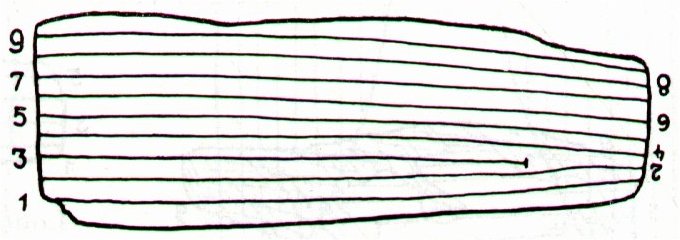
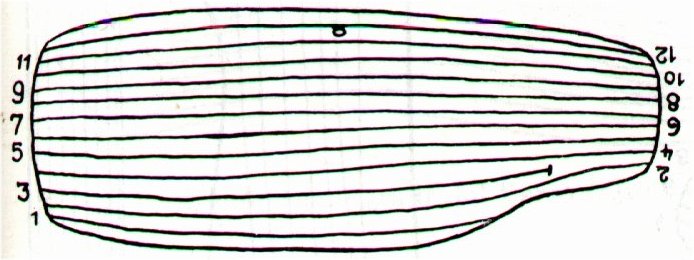
Surely this could be our key to begin with. And indeed, as if by coincidence
the last part of my examinations of Aruku Kurenga ended
with some comments regarding line Bb3.
 |
 |
 |
 |
 |
|
Bb3-9
(421 + 87 = 508) |
Bb3-10 (88) |
Bb3-11 (145 + 365) |
Bb3-12 ↔
Aa1-41 |
Bb3-13 (87 + 4 = 91) |
|
haati kava |
mai tae tuki to
tauuru |
nuku |
te uru papageti |
tagata oho |
|
RIGHT
ASCENSION DAYS AT THE FULL MOON: |
|
April
24 (50 + 64) |
25 (115
→
460 / 4) |
26 (→
177 - 61) |
27 |
28
(118 = 4 * 29½) |
|
"March 14 (→ π) |
15
(74 = 115 - 41) |
16 |
17 |
18 (77) |
|
FEBR 19 (50
= 34 + 16) |
20
(115 - 64) |
21
(52) |
22 |
TERMINALIA |
|
...
When it was evident that the years lay
ready to burst into life, everyone took
hold of them, so that once more would
start forth - once again - another
(period of) fifty-two years. Then (the
two cycles) might proceed to reach one
hundred and four years. It was called
One Age when twice they had made the
round, when twice the times of binding
the years had come together. Behold what
was done when the years were bound -
when was reached the time when they were
to draw the new fire, when now its count
was accomplished. First they put out
fires everywhere in the country round.
And the statues, hewn in either wood or
stone, kept in each man's home and
regarded as gods, were all cast into the
water. Also (were) these (cast away) -
the pestles and the (three) hearth
stones (upon which the cooking pots
rested); and everywhere there was much
sweeping - there was sweeping very
clear. Rubbish was thrown out; none lay
in any of the houses ...
Nuku.
1. Pau.: nuka, crowd,
throng. Ta.: nuú, army, fleet.
Mg.: nuku, a host, army. 2. Mgv.:
nuku, land, country, place. Sa.:
nu'u, district, territory,
island. Churchill.
... 1. Hanga Te
Pau, the landing site of Ira
and his band of explorers, is the
natural anchorage for those approaching
Vinapu by sea. The remarkable
stone fronts of the ahu of
Vinapu are all facing the sea. The
explorers landed at Hanga Te Pau
during the month 'Maro', that is,
June ... 2. The cult place of Vinapu
is located between the fifth and sixth
segment of the dream voyage of Hau
Maka. These segments, named 'Te
Kioe Uri' (inland from Vinapu)
and 'Te Piringa Aniva' (near
Hanga Pau Kura) flank Vinapu
from both the west and the east. The
decoded meaning of the names 'the dark
rat' (i.e., the island king as the
recipient of gifts) and 'the gathering
place of the island population' (for the
purpose of presenting the island king
with gifts) links them with the month 'Maro',
which is June. Thus the last month of
the Easter Island year is twice
connected with Vinapu. Also, June
is the month of summer solstice, which
again points to the possibility that the
Vinapu complex was used for
astronomical purposes. 3. On the 'second
list of place names', Hanga Te Pau
is called 'the middle (zenith) of the
land' (he tini o te kainga). This
may refer to a line bisecting the
island, but it can just as easily mean
the gathering of a great number (of
islanders) [→
nuku].
The plaza (130 x 130 meters) would have
been very well suited for this purpose
...
 |
|
No star listed (34) |
ξ Arietis (35.0),
ρ Ceti (35.4),
12 Trianguli
(35.8), ξ² Ceti (35.9)
*360.0 = *35.4 - *41.4 |
σ Ceti (36.9) |
ν Ceti (37.9) |
ν Arietis (38.5), δ, ε Ceti (38.8) |
|
Sumerian SAG |
 |
Phoenician resh |
 |
Greek rho |
Ρ (ρ) |
|
... Resh
(Arabic: rāۥ)
is the twentieth letter of many
Semitic alphabets, including
Phoenician, Aramaic, Hebrew ...
The word resh is usually
assumed to have come from a
pictogram of a head, ultimately
reflecting Proto-Semitic *raۥ(i)š-.
The word's East Semitic cognate,
rēš-, was one possible
phonetic reading of the Sumerian
cuneiform sign for 'head' (SAG).

.jpg)
... Then I
become aware of ... a presence -
a faint, ghostly glimmering,
like moonglow, that has appeared
on the solstice stone. I don't
know how long it lasts, a second
or two only I would guess, but
while it is there it seems less
like a projection - which I know
it to be - than something
immanent within the stone
itself. And it seems to function
as a herald for it fades almost
as soon as it has appeared and
in its place the full effect
snaps on - instantaneously. It
wasn't there, and then it's
there. As Chris had described,
the effect does curiously
resemble a poleaxe, or a flag on
a pole, and consists of a
'shaft', narrow at the base but
widening a little towards the
top, running up the left hand
side of the solstice stone,
surmounted by a right-facing
'head' or 'flag'. An instant
later an almond-shaped spot of
light, like an eye, appears a
few centimeters to the right of
the 'flag' and the effect is
complete. Weirdly - I do not
claim it has any significance -
this flag-on-a-pole symbol is
the ancient Egyptian hieroglyph
neter, meaning 'god', or
'a god' - and not to be
understood at all in the
Judaeo-Christian usage of that
word but rather as a reference
to one of the supernatural
powers or principles that guide
and balance the universe.
Manifested here, in this strange
Stone Age temple, it glows, as
though lit by inner fire
...

Marija Gimbutas: 'To sleep
within the Goddess's womb was to
die and to come to life anew'.
In a system of reincarnation the
old one must die in order to be
reborn, of course. At midsummer
Sun comes to a standstill, and
this must therefore be an
occasion when the 'flame of
life' had to be transported into
a new body. |
|
|
RIGHT
ASCENSION DAYS AT THE SUN: |
|
Oct
24 |
25 (115 + 183) |
26
(360 - 61) |
27
(300) |
28 |
|
ASELLUS PRIMUS (1st Ass Colt) =
θ
Bootis
(217.8) |
τ
Lupi,
δ
Oct. (218.1),
φ
Virginis (218.7)
FOMALHAUT (α Piscis Austrini) |
σ
Lupi (219.1),
ρ
Bootis (219.5),
HARIS (Keeper) =
γ
Bootis
(219.7)
FUM AL SAMAKAH (β
Piscium) |
σ Bootis (220.2),
η Centauri (220.4)
*179.0 = *220.4 - *41.4 |
ρ Lupi (221.0),
TOLIMAN = α
Centauri
(221.2), π Bootis (221.8), ζ Bootis
(221.9) |
 |
The end of line Bb3
is at glyph number 121 - presumably corresponding to right ascension day *41
-
i.e. intended to point at, to indicate the point at the
beginning of summer, viz.
Beltaine.

Counted from the beginning of the text on side a this glyph
comes after 1½ years (365 + 6 * 29½ = 542 days):
 |
 |
 |
|
Bb3-41 (540 = 3 * 180) |
Bb3-42 (541 -
421 = 120) |
Bb3-43 (542 =
177 + 365) |
|
Itzam-Yeh
defeated |
28 May (148 = 225 -
77), 3149 BC |
|
1st 3-stone place |
21 May (141 = 225 -
84), 3114 BC |
|
Creation of our
present world |
13 August (225), 3114
BC |
|
Och ta chan
(Hun-Nal-Ye 'entered or became the
sky') |
5 February (36 = 141
- 105), 3112 BC |
|
21 May, 3114 BC - 5 February, 3112
BC = 224 + 282 + 36 = 506 + 36 = 542
542 'happens to be'
the sum of 365 days and 6 * 29½
nights. |
|
|
mai tae vere
hia - ki te pito o
te henua |
e nuku hoi |
kua here te toa - i ruga o to
maro |
|
Vere. 1. Beard, moustache (vede
G); vere gutu, moustache; verevere,
shaggy, hairy, tow, oakum. Mgv.: veri,
bristly, shaggy, chafed (of a cord long in use).
Mq.: veevee, tentacles. Ta.: verevere,
eyelash. 2. To weed (ka-veri-mai, pick,
cut-grass T); verevere, to weed. P Mgv.:
vere, to weed. Mq.: veéveé,
vavee, id. 3. Verega, fruitful,
valuable; verega kore, unfruitful,
valueless, contemptible, vain, futile,
frivolous; tae verega, insignificant,
valueless; mataku verega kore, scruple.
Mgv.: verega, a design put into
execution; one who is apte, useful, having a
knowledge how to do things. 4. Ta.: verevere,
pudenda muliebria. Ma.: werewere, id.
(labia minora). Churchill. Sa.:
apungaleveleve, apongaleveleve, a
spider, a web. To.: kaleveleve, a large
spider. Fu.: kaleveleve, a spider, a web.
Niuē:
kaleveleve, a
cobweb. Nukuoro: halaneveneve,
a spider. Uvea: kaleveleve,
a spider. Mgv.: pungaverevere,
a spider. Pau.: pungaverevere,
cloth. Mg.: pungaverevere,
a cobweb. Ta.: puaverevere,
id. Mao.: pungawerewere,
puawerewere,
puwerewere,
a spider. Ha.: punawelewele,
a spider, a web. Mq.: pukaveevee,
punaveevee,
id. Vi.: lawa,
a fishing net; viritālawalawa,
a cobweb; butalawalawa,
a spider. Churchill 2.
Pito. 1. Umbilical cord; navel;
centre of something: te pito o te henua,
centre of the world. Ana poreko te poki, ina
ekó rivariva mo uru ki roto ki te hare o here'u
i te poki; e-nanagi te pito o te poki, ai
ka-rivariva mo uru ki roto ki te hare, when
a child is born one must not enter the house
immediately, for fear of injuring the child
(that is, by breaking the taboo on a house where
birth takes place); only after the umbilical
cord has been severed can one enter the house.
2. Also something used for doing one's buttons
up (buttonhole?). Vanaga. Navel. Churchill. H
Piko 1. Navel, navel string, umbilical cord.
Fig. blood relative, genitals. Cfr piko pau
'iole, wai'olu. Mō ka piko, moku
ka piko, wehe i ka piko, the navel cord is
cut [friendship between related persons is
broken; a relative is cast out of a family].
Pehea kō piko? How is your navel [a
facetious greeting avoided by some because of
the double meaning]? 2. Summit or top of a hill
or mountain; crest; crown of the head; crown of
the hat made on a frame (pāpale pahu);
tip of the ear; end of a rope; border of a land;
center, as of a fishpond wall or kōnane
board; place where a stem is attached to the
leaf, as of taro. 3. Short for alopiko.
I ka piko nō 'oe, lihaliha (song), at the
belly portion itself, so very choice and fat. 4.
A common taro with many varieties, all with the
leaf blade indented at the base up to the
piko, junction of blade and stem. 5. Design
in plaiting the hat called pāpale 'ie. 6.
Bottom round of a carrying net, kōkō. 7.
Small wauke rootlets from an old plant.
8. Thatch above a door. 'Oki i ka piko,
to cut this thatch; fig. to dedicate a house.
Wehewehe. |
|
Nov 25 → 9 * 25 = 225 |
26 (330) |
27 |
|
Al Kalb-16 (The Heart)
/
Jyeshtha-18 (Eldest)
/
ANA-MUA-1 (Entrance
pillar)
ANTARES = α Scorpii
(249.1),
MARFIK (Elbow) = λ Ophiuchi,
φ Ophiuchi (249.5), ω Ophiuchi (249.8) |
γ Apodis (250.1), σ Herculis (250.3), θ Tr.
Austr. (250.6),
τ Scorpii
(250.7) |
HAN = ζ Ophiuchi
(251.0) |
|
... In China, with
Capricornus, Pisces, and a part of Sagittarius,
it [Aquarius] constituted the early Serpent, or
Turtle, Tien Yuen; and later was known as
Hiuen Ying, the Dark Warrior and Hero, or
Darkly Flourishing One, the Hiuen Wu, or
Hiuen Heaou, of the
Han dynasty, which Dupuis gave as
Hiven Mao. It was a symbol of the emperor
Tchoun Hin, in whose reign was a great
deluge; but after the Jesuits came in it became
Paou Ping, the Precious Vase. It
contained three of the sieu, and headed the list
of zodiac signs as the Rat, which in the
far East was the ideograph for 'water', and
still so remains in the almanacs of Central
Asia, Cochin China, and Japan ...

|
|
RIGHT
ASCENSION DAYS AT THE FULL MOON: |
|
No star listed (66) |
No star listed (67) |
Rohini-4 (The Red One)
/
Pidnu-sha-Shame-4 (Furrow
of Heaven)
/
ANA-MURI-2 (Rear pillar - at the foot of which
was the place for tattooing)
ALDEBARAN = α Tauri
(68.2),
THEEMIN = υ² Eridani
(68.5) |
|
May 26 |
27 (80 + 67 =
147) |
28 (148 = 225
- 77) |
|
'April 29 |
30 (120 = 147
- 27 |
'May 1 (121) |
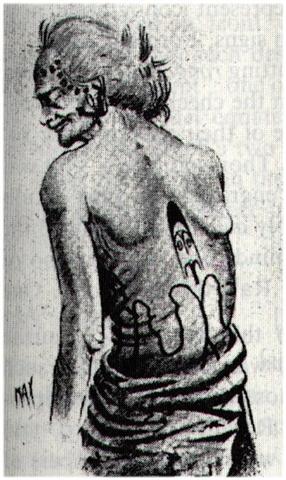 |
Which probably means the 'premature' ending of line Bb3 was at
'May 1 (121), as extrapolated down from my assumed era for
rongorongo to that in Roman times (*27 right ascension days away
in time-space). Here the Full Moon would (ideally)
have been in November 27 (331 = 121 + 210 = 11 * 11 + 183 + 27).
We will remember that
the beginning of side b on the C tablet was designed to be
at glyph number 366 + 27 = 393.
And, as we also should remember, there were twice 21(0) assessors (judges)
in the Hall of Two Truths.
Presumably there were 21 geographical districts on each side of
the Nile:
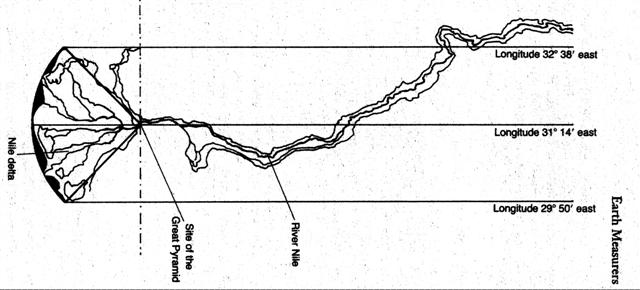
... They tightly swathed the broken body in linen bandages, and
when they performed over it the rites that thereafter were to be
continued in Egypt in the ceremonial burial of kings, Isis
fanned the corpse with her wings and Osiris revived, to become
the ruler of the dead. He now sits majestically in the
underworld, in the Hall of the Two Truths, assisted by forty-two
assessors, one from each of the principal districts of Egypt;
and there he judges the souls of the dead. These confess before
him, and when their hearts have been weighed in a balance
against a feather, receive, according to their lives, the reward
of virtue and the punishment of sin ...

Furthermore,
November 27 was on Hawaii regarded as the day before the
cycle of Lono would (ideally) begin.
... The correspondence between the winter solstice and the
kali'i rite of the Makahiki is arrived at as follows:
ideally, the second ceremony of 'breaking the coconut', when the
priests assemble at the temple to spot the rising of the
Pleiades, coincides with the full moon (Hua
tapu) of the twelfth lunar month (Welehu). In the
latter eighteenth century, the Pleiades appear at sunset on 18
November. Ten days later (28 November), the Lono effigy
sets off on its circuit, which lasts twenty-three days, thus
bringing the god back for the climactic battle with the king on
21 December, the solstice (= Hawaiian 16 Makali'i). The
correspondence is 'ideal' and only rarely achieved, since it
depends on the coincidence of the full moon and the crepuscular
rising of the Pleiades ...
|
 |
|
Bb4-1 (584 - 41 = 3 * 181) |
|
Kua
huki - ko te maro |
|
Nov 28 (332 =
322 + 10) |
|
ζ
Herculis,
η
Tr. Austr.
(252.1), η Herculis, β Apodis (252.5) |
|
May 29 (149 =
332 - 183) |
|
'May 2 (122) |
|
"April 18
(108 = 149 - 41) |
|
No star listed (69) |
|
|
Turou. Mgv.:
a great sacriledge or blasphemy. Ta.: turou, a
curse, to blaspheme. Churchill.
... Presented the drink to quaff, he
refused it, saying that he was ill; but urged to taste
it from the tip of his finger, he did so and was
immediately overpowered by its magic. He lifted the bowl
and was drunk. He sent for Quetzalpetlatl,
his sister, who dwelt on the Mountain Nonoalco.
She came, and her brother gave her the bowl, so that she
too was drunk. And with all reason forgotten, the two
that night neither said prayers nor went to the bath,
but sank asleep together on the floor.
And in the morning
Quetzalcoatl said, in shame, 'I
have sinned; the stain of my name cannot be erased. I am
not fit to rule this people. Let them build a habitation
for me deep under the ground; let them bury my bright
treasures in the earth; let them throw the glowing gold
and shining stones into the Precious Waters where I take
my nightly bath. And all this was done. The king
remained four days in his underground tomb, and when he
came forth he wept and told his people that the time had
come for his departure to the Red Land, the Dark Land,
the Land of Fire ...
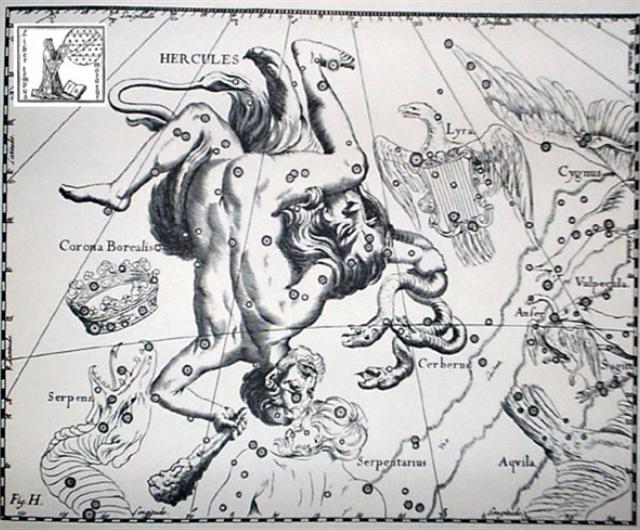
|




.jpg)










